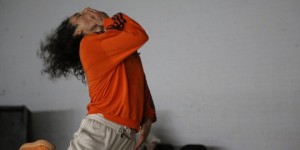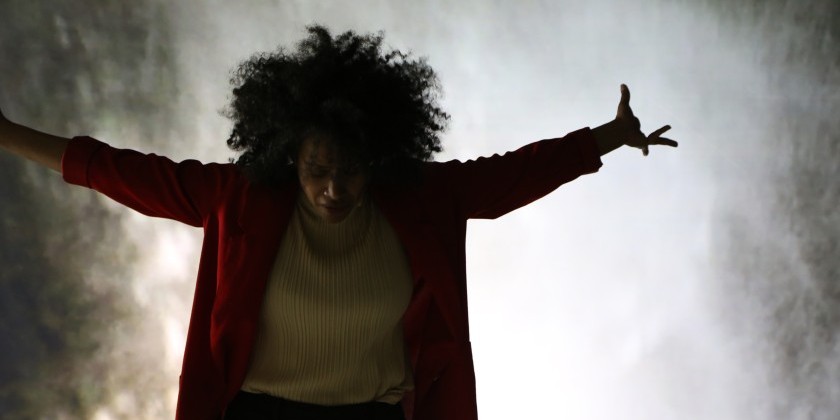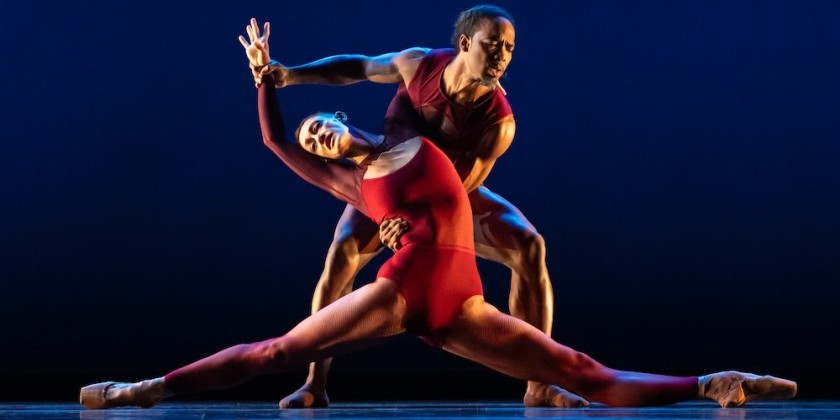Impressions of Rebecca Patek

“The Future Was Looking Better in the Past: My Family Herstory..."
The Future Was Looking Better in the Past: My Family Herstory: Or from religious persecution to american greed to murderous infamy to denial, repression and the slow dissolution into moral confusion, financial ruin and karmic retribution
Chocolate Factory Theater
Created by Rebecca Patek
Performed by John Hoobyar, Sheila Lewandowski, David Patek, Sam Roeck, Chris Tyler, Peter Mills Weiss, and Jaime Wright
Music by L.A. Dierker
Lighting Design by Joe Levasseur
Video Design and Production by David Pym
Video Production by Vincent Lafrance
Before O.J. Simpson, before Adolf Eichmann, before the Lindberg kidnapping, there was Leopold and Loeb, two wealthy Jewish teenagers who, in 1924, were convicted of kidnapping and murdering fourteen-year-old Bobby Franks in what was billed as "the trial of the century."
Inspired by Nietzsche's concept of superman, an individual so superior as to transcend the ethical rules of average citizens, Nathan Leopold and Richard Loeb hoped to establish their brilliance by committing the perfect crime. A pair of Leopold’s glasses found near the body proved to be their undoing, and the two could have been executed were it not for the impassioned and long-winded defense of Clarence Darrow.
In the epically titled The Future Was Looking Better in the Past: My Family Herstory: Or from religious persecution to american greed to murderous infamy to denial, repression and the slow dissolution into moral confusion, financial ruin and karmic retribution, Rebecca Patek, a cousin of Richard Loeb, unpacks the crime and in the process, a family tree stained by one relative’s depravity. With a small cast of actor-dancers (some of whom are only heard or seen via recordings), a rolling platform equipped with two folding chairs and mics, and a 5-sided video screen, she fashions a choreographic collage using recreation and interpretation to scrutinize the impact of a historical legacy.
Few of the details – Loeb succumbing to Leopold’s sexual advances in return for securing his assistance as crime buddy; Loeb’s nanny painting him as a charming sociopath – are revelatory. What is interesting is how Patek chooses to present them. One video depicts Leopold and Loeb, an hour after the murder, enjoying a romantic picnic. They discuss the slaying and award it an 8 on a 1-to-10 scale before having sex. In another, as a recitation of Clarence Darrow’s now famous speech distorts, Franks (a blunt-banged and creepily innocent John Hoobyar) lurches through army crawls.
A key player in the piece is Patek herself. A lavender-scarfed Chris Tyler (he also performs Loeb with glittering derangement) apes Patek in an interview about her piece-making process. Tyler hems and haws and affects Patek’s wide-eyed stare and stumbling answers. There’s also a series of subtitled, sound-only videos showcasing a booty call between Patek and an anonymous man. They discuss Lars Von Trier’s “Nymphomaniac” and engage in some light S&M.
The question of motivation – why do we do these terrible things we do – arises again and again. While the catchphrases of Nietzsche ostensibly galvanized Leopold and Loeb, they likely kidnapped and murdered Bobby Franks for the simple thrill of the experience. Although broached several times, Patek’s impetus for making the piece remains unarticulated: When pressed for a straight answer, she states baldly, “I don’t know.” One clue does surface: Loeb, stomach padded to evoke pregnancy, suggests the genetic impact of immorality. Is Patek’s debauchery a legacy from her cousin?
Who knows? More important, who cares? With its flaccid, shambling feel, the work functions more as a digressive reenactment rather than a trenchant reflection – something, much like Leopold and Loeb’s murder of Bobby Franks, performed for the experience not because it means anything.













